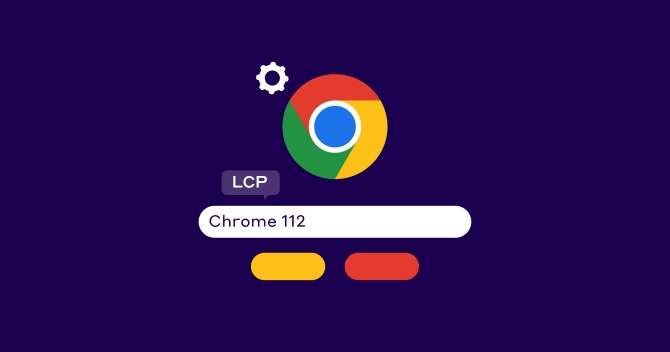Largest Contentful Paint update in Chrome 112
Last updated on Apr 24th, 2023 | 3 min
Chrome 112 was released at the beginning of April, and from all the new updates, one, in particular, caught our attention:
“In Chrome 112, LCP will begin to ignore images with very low content relative to their display sizes.”
Of course, we’ve asked ourselves the same question as you probably do right now:
How will this change impact our LCP scores?
Let’s find out.
How is Largest Contentful Paint measured?
Largest Contentful Paint is one of three Core Web Vitals metrics used to measure the loading speed of a web page.
LCP measures the time it takes for the largest visible element (often an image or a block-level element) in the viewport to be rendered on the screen. It gives insight into the user's loading experience, making it a crucial aspect of website performance optimization.

Historically, LCP did not take into account full-screen background images or simple gradient backgrounds created with CSS. This is because these images are not seen as important content but as backgrounds or temporary placeholders for other content.
While this keeps being true, the latest Chrome update extends that heuristic to low-content images as well.
What’s new about LCP in Chrome 112
LCP now ignores images that have very little content when compared to the size at which they are displayed.
Currently, the threshold for LCP is set at 0.05 bits of image data per pixel displayed.
Images with less than this amount of data will not be counted towards the LCP metric. This threshold mainly covers large, uncomplicated background images or overlays on the viewport. It may also include simple placeholders that are sometimes used for lazy-loaded images.
Why is LCP getting updated?
The latest changes aim to provide all website owners and developers with more accurate LCP measurements.
This is part of Google’s ongoing efforts to improve Core Web Vitals, as they provide direct feedback about how real-world users experience the web.
But the LCP update isn’t the first notable change in 2023. In February, Lighthouse 10 was released, marking the depreciation of Time to Interactive. Furthermore, in Chrome 111, some changes related to FCP and paint holding were also released.
To keep track of all the latest updates, visit the metrics changelog.
How will this affect your LCP score?
When low-content images are ignored, Chrome will report the first paint with either text or a more significant image as LCP.
Тhe latest change could improve LCP if a low-content background or overlay is added to the page after other content.
However, it could worsen your LCP score if a low-content background or placeholder was being used early on to reserve space for a more critical image that loaded later.
When will you get affected by the LCP update?
This change was launched to all Chrome users with Chrome 112. Previous versions back to Chrome 109 will pick up this change as well.

